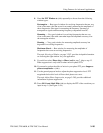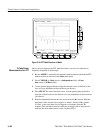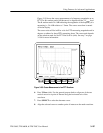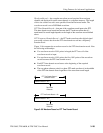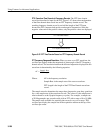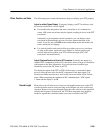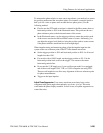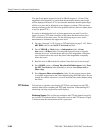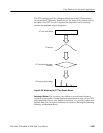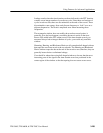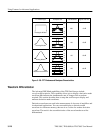
Using Features for Advanced Applications
TDS 500C, TDS 600B, & TDS 700C User Manual
3–203
Whether Zoom is on or off, you can press Reset (main) ➞ Reset Live Factors
or Reset All Factors (side) to return the zoomed FFT waveform to no magnifi-
cation.
Zoom always uses either sin(x)/x or linear interpolation when expanding
displayed waveforms. To select the interpolation method: press DISPLAY ➞
Setting (main) ➞ Display (pop-up) ➞ Filter (main) ➞ Sin(x)/x or Linear
(side).
If the source waveform record length is 500 points, the FFT will use 2X Zoom to
increase the 250 point FFT frequency domain record to 500 points. Therefore,
FFT math waveforms of 500 point waveforms are always zoomed 2X or more
with interpolation. Waveforms with other record lengths can be zoomed or not
and can have minimum Zooms of 1X or less.
Sin(x)/x interpolation may distort the magnitude and phase displays of the FFT
depending on which window was used. You can easily check the effects of the
interpolation by switching between sin(x)/x and linear interpolation and
observing the difference in measurement results on the display. If significant
differences occur, use linear interpolation.
Aliasing occurs when the oscilloscope acquires a source waveform with
frequency components outside of the frequency range for the current sample rate.
In the FFT waveform, the actual higher frequency components are under-
sampled, and therefore, they appear as lower frequency aliases that “fold back”
around the Nyquist point. (See Figure 3–98.)
The greatest frequency that can be input into any sampler without aliasing is
1
@
2
the sample frequency. Since source waveforms often have a fundamental
frequency that does not alias but have harmonic frequencies that do, you should
have methods for recognizing and dealing with aliases:
H Be aware that a source waveform with fast edge transition times creates
many high frequency harmonics. These harmonics typically decrease in
amplitude as their frequency increases.
H Sample the source signal at rates that are at least 2X that of the highest
frequency component having significant amplitude.
Undersampling (Aliasing)



